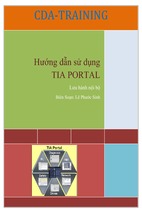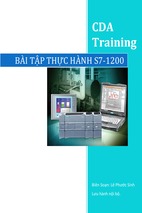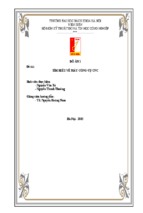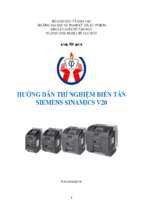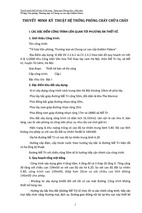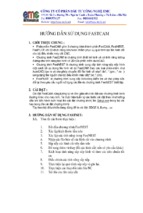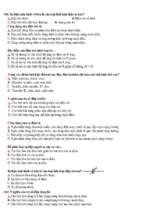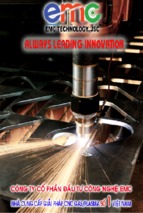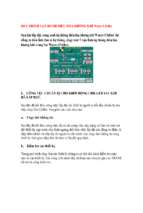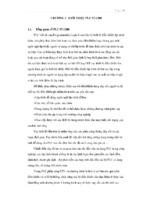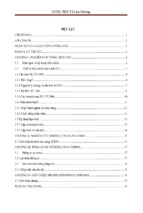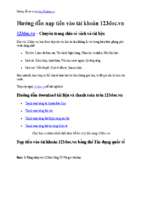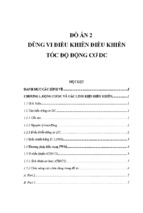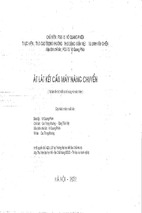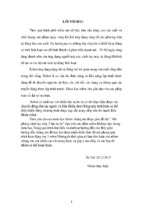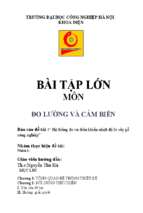REFA - TIME
MEASUREMENT
FINAL REPORT OF THE PROJECT IN FISCHER COMPANY
GROUP E
VGU | GPEM2016
1. Abstract:
This research would apply a time measurement method at Fischer Asia Company with an aim of
finding out improvement opportunities that can eliminate wastes as well as increase the efficiency
and productivity of the assembly line. Team E focused on the final assembly including these steps:
put 4 springs in housing, add pre-assembled shaft, fix 4 screws, check buttons and rework.
Furthermore, this research also attempted to balance the whole main assembly line along with
proposing a new layout. Additionally, other several ideas are proposed to have some increments in
the productivity, efficiency and ergonomics aspects as an expectation.
2. Introduction:
This report documents the most important information and figure that leads to the successful
completion of Group E and GPEM2016 class project in Fischer company. It provides very useful and
insightful information regarding time measurement methods, and also the line balancing solution
for the main assembly line. The report is outlined by several following sections:
1.
2.
3.
4.
5.
Abstract
Introduction
Measurement
Optimization
Conclusion
In detail, the measurement section includes Method part, result part and discussion part. It is
followed by the optimization section as same as structure of the measurement section. Finally, there
are comments for the project as well as proposals for future improvement.
3. Measurement
3.1.
Method
This study applied the REFA stopwatch time [1] to analyze the processing time in assembly line
and its several steps is below:
Figure 1. REFA Time measurement method
3.2.
Results
Team E broke the operation of final assembly out into these steps:
Page 1 of 12
Time measurement report – GPEM2016_VGU – Group E
Figure 2. Motion element steps
3.2.1. Assembly diagram
The Assembly diagram provides a sequence of tasks in the main assembly process line.
Group E focused on these tasks which are captured a red area in the picture below:
Figure 3. An assembly chart of the main assembly line
All motion elements were handled by one person. The number of samples was 159
including the 4 main steps, reworks, waiting and interruption due to personal reasons.
The measurement results are below:
Page 2 of 12
Time measurement report – GPEM2016_VGU – Group E
Table 1. Time measurement in final assembly
Due to a long length of the above table, it is divided into 2 parts as above. From the measurement,
we can see that these statistics present clearly how many time for each main task, waiting and
interruption. The average amount of time for reworks is the largest time, 102.5 seconds, whereas
the lowest number is added pre-assembled shaft, 5.57 seconds. The number of samples of 4 main
tasks was 33 to 36, while the interruption samples was lowest number, 3. The standard deviation
and the confidence of the fix 4 screws are highest, 5.12 and 1.7, respectively.
Table 2. Summary of motion measurements of Station 9
Page 3 of 12
Time measurement report – GPEM2016_VGU – Group E
This table summarizes the points of time those we started and finished measurements. The
relative confidence of the task add pre-assembled shaft is the greatest, while the smallest number
is put 4 springs in, 16.31% and 8.04%.
Table 3. Summary of the proposition of elements of time
3.3.
Discussion
Within the measurements, regarding performance level, it is very difficult to evaluate due to
distraction from our students and other causes. Hence, in this report the performance level is
excluded. For other aspects, which can be considered, firstly, there are numerous reworks owing to
personal reasons and mistakes from the previous station. Some observations on the worker who
handled these tasks, show that she forgot putting springs into shaft. It could be solved by that Work
instruction should be placed in front of the worker to remind them not skip any step. Secondly, the
waiting time is caused by misbalance among stations in the main assembly process. A line balancing
method is one the best ways to deal with this issue and its application in this research is presented
in a next part of the report.
4. Optimization
The whole process can be split into 2 parts:
Page 4 of 12
Time measurement report – GPEM2016_VGU – Group E
One process is pre-assembly, where the motor and board of the pre-assembled shaft can be
produced in advance and independently. Thus, the process can be flexible arranged base on the
demand and available manpower.
One other process must be main assembly where the axle will be assembled with the frontcover and the buttons inside. Because the battery holder cannot be stayed in the pre-assembled
shaft without screws, the main line should be included the process of shaft assembly.
The optimization is basic focus to balance the main line.
Figure 4. Production workflow
4.1.
Line balancing method:
Line balancing is to design a smooth production flow by reassigning work to be carried out in
production processes among of workstations. In such a way that every operator gets the same
output of work in terms of time. The cycle time in which each workstation completes specified tasks
must be equal or less than the takt time.
The takt time is defined as how fast a production line could be in a specified amount of time to
adopt a detail customer demand.
In general, the takt time can be calculated by the formula [2] below:
𝑇𝑎𝑘𝑡 𝑡𝑖𝑚𝑒 =
𝑊𝑜𝑟𝑘𝑖𝑛𝑔 ℎ𝑜𝑢𝑟𝑠 𝑝𝑒𝑟 𝑑𝑎𝑦
𝐴𝑚𝑜𝑢𝑛𝑡 𝑜𝑓 𝑝𝑟𝑜𝑑𝑢𝑐𝑡 𝑐𝑢𝑠𝑡𝑜𝑚𝑒𝑟 𝑛𝑒𝑒𝑑 𝑝𝑒𝑟 𝑑𝑎𝑦
Minimization the number of workstations and maximization of the production efficiency are
the common goals.
The production efficiency is calculated by the formula [3] below:
𝑇ℎ𝑒 𝑝𝑟𝑜𝑑𝑢𝑐𝑡𝑖𝑜𝑛 𝑒𝑓𝑓𝑖𝑐𝑖𝑒𝑛𝑐𝑦 =
𝑇𝑜𝑡𝑎𝑙 𝑜𝑓 𝑐𝑦𝑐𝑙𝑒 𝑡𝑖𝑚𝑒
𝑁𝑢𝑚𝑏𝑒𝑟 𝑜𝑓 𝑜𝑝𝑒𝑟𝑎𝑡𝑜𝑟 × 𝑇ℎ𝑒 𝑇𝑎𝑘𝑡 𝑡𝑖𝑚𝑒
The method of line balancing in this report is followed the procedure [4] below:
Page 5 of 12
Time measurement report – GPEM2016_VGU – Group E
Figure 5. Line balancing procedure
4.2.
Results:
Currently, the Fisher Assembly Line produces about 200 pcs/day. But the aim of this balancing
is to meet to future demand that forecasted from 30 to 40 second in terms of Takt time.
4.2.1. Line balancing of current state
In order to understand the main line workflow and measure how long each operator at a
specified workplace of main line takes to complete a particular job. A time measurement table is
performed below:
Table 4. All motion elements of main assembly line
Page 6 of 12
Time measurement report – GPEM2016_VGU – Group E
Start measurement
point
Process name
End measurement point
Release the housing
after putting it into
assembly box
Add all buttons
Touch first button
Release last button
Add support grid
Touch supportive grid Release supportive grid
Add board and fix it
Touch board
Release board
Add battery holder
Touch battery holder Release battery holder
Put motor in shaft
Touch shaft
Release shaft
Add locking block
Touch locking block
Release locking block
Add slider
Touch slider
Release slider
Add sprocket
Touch sprocket
Release sprocket
Fold board
Touch board
Release board
Passing
Touch shaft
Release shaft
Put 4 springs in
Reach the 1st spring Release last spring
Add pre-assembled shaft
Reach the shaft
Release shaft
Fix 4 screws
Reach the 1st screw
Release last screw
Check buttons
Reach the shaft
Release work piece
Rework
End of waiting/rework
Reach the finished
Put in laser marking machine products from
Press button.
previous station.
Release product into
Take out and end of process Open machine door.
Totepan.
Put housing in assembly box
Touch housing cover
(plastic bag)
Time per
piece
(second)
Amount of
Reative
measureMin real
confidenc
ments
value
e
done
Max real
value
2.48
20
9.44%
2.25
2.71
23.06
3.09
2.82
4.18
8.47
3.88
5.10
4.30
7.20
4.00
15.24
5.57
17.58
7.03
19.00
20
20
20
20
30
30
30
30
30
9
33
36
35
35
12
8.63%
12.50%
10.53%
13.24%
7.01%
15.88%
18.27%
15.16%
18.20%
70.15%
8.04%
16.31%
9.65%
14.05%
21.07
2.70
2.52
3.63
7.88
3.26
4.17
3.65
5.89
1.19
14.0
4.7
15.9
6.0
25.05
3.48
3.12
4.73
9.06
4.50
6.03
4.95
8.51
6.81
16.46
6.48
19.28
8.01
7.13
23
8.40%
4.5
11.40
10.20
23
5.50%
8.2
13.77
The max real value in the table will be use as the amount of time that each operator need to
complete his or her task under normal condition.
8.01
11.4 13.77
𝑇𝑜𝑡𝑎𝑙 𝐶𝑦𝑐𝑙𝑒 𝑇𝑖𝑚𝑒
147.5
=
= 73.5%
𝑁𝑢𝑚𝑏𝑒𝑟 𝑜𝑓 𝑂𝑝𝑒𝑟𝑎𝑡𝑜𝑟𝑠 × 𝑀𝑎𝑥 𝐶𝑦𝑐𝑙𝑒 𝑡𝑖𝑚𝑒 4 × 50.2
𝑊𝑎𝑖𝑡𝑖𝑛𝑔 𝑝𝑒𝑟𝑐𝑒𝑛𝑡𝑎𝑔𝑒 = 26.5%
Time measurement report – GPEM2016_VGU – Group E
Cycle time (in seconds)
Take out and end of process
Put in laser marking machine
8.51 16.46
6.48 19.28
𝐿𝑖𝑛𝑒 𝐸𝑓𝑓𝑖𝑐𝑖𝑒𝑛𝑐𝑦 =
Page 7 of 12
Check buttons
4.95
Fix 4 screws
6.03
Add pre-assembled shaft
4.5
Put 4 springs in
9.06
Fold board
4.73
Add sprocket
Add battery holder
3.12
Add slider
Add board and fix it
3.48
Add locking block
Add support grid
2.71 25.05
Put motor in shaft
Add all buttons
Operator 1
Operator 2
Operator 3
Operator 4
Put housing in assembly box
Processes
Table 5. Motion elements and its value of main assembly line in a current state
39.1
33.1
50.2
25.2
Balancing chart for Main Assembly Line
60.00
50.00
40.00
30.00
20.00
10.00
0.00
Operator 1
Operator 2
Operator 3
Operator 4
Put housing in assembly box
Add all buttons
Add support grid
Add board and fix it
Add battery holder
Put motor in shaft
Add locking block
Add slider
Add sprocket
Fold board
Put 4 springs in
Add pre-assembled shaft
Fix 4 screws
Check buttons
Put in laser marking machine
Take out and end of process
Takt time
Figure 6. Current state line balancing
At the time while the time study has been taking place, there was 4 operators in 4 workstations
who working for the main line. The station 3 had the highest cycle time (50.2s) while the station 4
had the lowest one (25.2s). All of workstations have the cycle time exceeded the given takt time,
apart from workstation 4. Also, there are big gaps between workstations.
4.2.2. Reallocate work and re-balancing
The idea of this stage is to try to distribute the task from operator who has the cycle time
exceed the takt time, to operator who has the gaps between his or her cycle time and the takt time.
However, the distribution of work must to ensure the work ordering and the constraints work piece.
The table below show the better balancing that achieved the takt time 33 second.
Table 6. Motion elements and its value of main assembly line in a line balancing solution
Page 8 of 12
Time measurement report – GPEM2016_VGU – Group E
2.71 25.05
4.95
8.51 16.46
6.48 19.28
8.01
11.4 13.77
A part of workload of operator 1 is shared to operator 2. One more operator need to be
added to share the workload with operator 3. The final operator now handles the task of buttons
checking which the operator did before.
Because the battery holder cannot be stayed on the pre-assembled shaft without screws.
The shaft assembly process should be included in the process of main line.
Balancing chart for Main Assembly Line
40.00
30.00
20.00
10.00
0.00
Operator 1
Operator 2
Operator 3
Operator 4
Operator 5
Put housing in assembly box
Add all buttons
Add support grid
Add board and fix it
Add battery holder
Put motor in shaft
Add locking block
Add slider
Add sprocket
Fold board
Put 4 springs in
Add pre-assembled shaft
Fix 4 screws
Check buttons
Put in laser marking machine
Take out and end of process
Takt time
Figure 7. Optimized line balancing
The figure illustrates how better the line balanced even though there are still some small
gaps between workstations. The line efficiency is now must more improved:
Page 9 of 12
Time measurement report – GPEM2016_VGU – Group E
Cycle time (in seconds)
Take out and end of process
Put in laser marking machine
6.03
Check buttons
Add slider
4.5
Fix 4 screws
Add locking block
9.06
Add pre-assembled shaft
Put motor in shaft
4.73
Put 4 springs in
Add battery holder
3.12
Fold board
Add board and fix it
3.48
Add sprocket
Add support grid
Add all buttons
Put housing in assembly box
Processes
Operator 1
Operator 2
Operator 3
Operator 4
Operator 5
27.8
30.9
29.9
25.8
33.2
𝐿𝑖𝑛𝑒 𝐸𝑓𝑓𝑖𝑐𝑖𝑒𝑛𝑐𝑦 =
𝑇𝑜𝑡𝑎𝑙 𝐶𝑦𝑐𝑙𝑒 𝑇𝑖𝑚𝑒
147.5
=
= 88.9%
𝑁𝑢𝑚𝑏𝑒𝑟 𝑜𝑓 𝑂𝑝𝑒𝑟𝑎𝑡𝑜𝑟𝑠 × 𝑇𝑎𝑘𝑡 𝑡𝑖𝑚𝑒 5 × 33.2
𝑊𝑎𝑖𝑡𝑖𝑛𝑔 𝑝𝑒𝑟𝑐𝑒𝑛𝑡𝑎𝑔𝑒 = 11.1%
4.3.
Discussion:
In order to apply the optimization to the real line, the location of operator 1, 2 and 3 need to
be rearranged. In such a way that the operator 3 can get the work piece which completed by the
previous operators.
The operations and the workers of the main assembly is proposed to be arranged as the
optimized line balancing in Section 4.2.2. It is necessary to have a layout design for a line balancing
solution. This discussion shows the layout design following:
Figure 8. General new layout design
For a general view of the layout design, it represents locations of operators and its material
flow. The process flow will come from operator 1 and operator 2, to operator 3, then handled by
operator 4 before ending at operator 5.
On a next stage, the layout design is analyzed more concrete as below:
Page 10 of 12
Time measurement report – GPEM2016_VGU – Group E
Figure 9. Concrete new layout design of main assembly line
Beside rearranging resources of the main assembly such as workers and their operations, a
successful workstation should consider 5S and ergonomics aspects. Moreover, as state previously,
the operator 4 sometimes forgot a motion step in the process, it is essential to hang a work
instruction in front of her with the purpose of being kindly reminded.
5. Conclusion
The following conclusion were drawn from this research:
Time measurements of final assembly (Station 9)
Statistics for the time measurements
Analysis of a current state of the main assembly line
A Proposal of line balancing and its layout design solution
The main contribution of this work is how to measure the production time of manual
assembly lines based on REFA Time measurement methods. Due to a limitation of time, a
number of observations is not enough to release the most accurate time measurements. The
author plans to conduct the future research in the whole assembly line of Fischer company
through capturing more observations from the assembly line along with evaluate a new
performance measure for each specified operator, and propose more solution to balance and
optimize workstations as well as whole assembly line.
6. Authors
Institution: Vietnamese German University
Department of Global Production Engineering and Management – GPEM2016
Page 11 of 12
Time measurement report – GPEM2016_VGU – Group E
List of authors:
Ngo Anh Phuong
Nguyen Hoang Thien
Le Thi My Anh
Nguyen Hai Nam
Student ID: 12259
Student ID: 12240
Student ID: 12272
Student ID: 12086
References
Mahto, N. K. (2013). Assembly Line Balancing: A Review of Developments and Trends in Approach to
Industrial Application. Global Journal of Researches in Engineering.
Xiaomei Hu, Y. Z. (2014). A Novel Assembly Line Balancing Method Based on PSO Algorithm. Hindawi
Publishing Corporation, 10.
Page 12 of 12
Time measurement report – GPEM2016_VGU – Group E
- Xem thêm -

